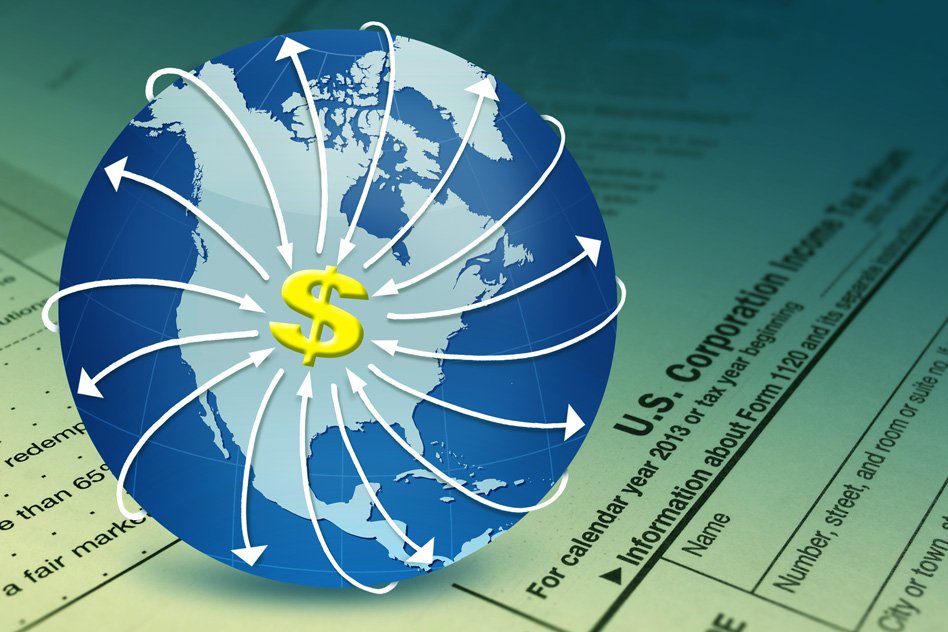Tax evasion is broadly assumed to be an everlasting downside for governments — however how frequent is it? For the primary time, a brand new learn about, co-authored by way of an MIT professor, has put a price on a specific more or less tax evasion, referred to as “round-tripping,” that the U.S. govt has been looking to thwart.
In round-tripping, U.S. traders transfer price range to offshore tax havens, then put money into U.S. fairness and debt markets with those “international” price range. In essence, the U.S. traders are disguising themselves as international traders, who aren’t topic to the similar tax charges on capital beneficial properties and passion source of revenue. The cash is alleged to have made a “around shuttle” because it originates within the U.S., and finishes up again in U.S. markets.
In keeping with the learn about, revealed within the Magazine of Finance, each 1 % build up within the best U.S. tax charge ends up in an build up of two.1 % to two.8 % in international portfolio funding (FPI) from tax havens. As of 2008, some $34 billion to $109 billion of FPI from the ones havens seems to were invested within the U.S. by the use of round-tripping, resulting in a lack of $8 billion to $27 billion in tax income.
“The upper the tax charge, the extra securities seem to be bought from tax haven jurisdictions,” says Michelle Hanlon, a professor of accounting at MIT. “This turns out to signify that U.S. persons are pretending to be foreigners who then put money into the U.S. markets.”
The paper, “Taking the Lengthy Approach House: U.S. Tax Evasion and Offshore Investments in U.S. Fairness and Debt Markets,” is co-authored by way of Hanlon, Edward L. Maydew of the College of North Carolina, and Jacob R. Thornock of the College of Washington.
Hanlon and her co-authors have offered their findings to the personnel of the U.S. Senate’s Everlasting Subcommittee on Investigations, amongst different teams within the effects.
A delicate technique for figuring out evaders
To make sure, no longer all investments from tax havens are doubtful, so the learn about hired a multiprong technique. First, it checked out adjustments in funding ranges from tax havens after adjustments in U.S. tax charges. 2d, the learn about evaluated those adjustments in funding with an eye fixed as to whether or no longer the U.S. has a bilateral Tax Data Alternate Settlement (TIEA) with the offshore sovereignty in query. TIEAs doubtlessly permit the U.S. to determine significantly extra details about the investments being created from the ones places.
Certain sufficient, the researchers discovered that there’s a lower of as much as 32 %, in each fairness and debt investments, when the U.S. creates a TIEA with different sovereign events.
“The opposite impact we see is that after the U.S. enters into an change settlement, we see much less funding from tax havens,” provides Hanlon, who’s the Howard W. Johnson Professor of Accounting on the MIT Sloan College of Control.
To be transparent, Hanlon says, “It’s very exhausting to spot tax evasion, as a result of clearly persons are looking to cover it.” On the other hand, she provides, “When we began seeing the information, we learned lets attempt to take on this downside. We needed to do numerous assessments to check out to isolate the impact we’re on the lookout for, [and] we predict it’s a large step to check out to position some numbers round this phenomenon.”
The conclusions come from knowledge gathered by way of each the U.S. Federal Reserve and the U.S. Treasury, which allowed the researchers to piece in combination per 30 days flows of international funding into U.S. fairness and debt markets.
Coverage adjustments: What can also be performed?
Students in finance and tax coverage say they’re inspired by way of the analysis. “Whilst this tax evasion has been happening for a very long time, the paper could be very well timed,” says Campbell R. Harvey, a professor of finance at Duke College. The learn about, he provides, is the type of “analysis that affects each the best way we predict as teachers and has reverberations on Capitol Hill.”
Jeffrey Hoopes, a lecturer in accounting at Ohio State College, notes that the learn about supplies helpful, sensible perception into the bottom-line affect of tax-code adjustments, for the reason that traders might evade one of the crucial income the U.S. expects to obtain. “There’s an previous announcing that to support upon one thing, it comes in handy as a way to measure it,” Hoopes says. “For the reason that round-tripping happens, it is vitally helpful to grasp what the impact of an build up within the capital beneficial properties tax charge could be in this evasive habits.”
Hanlon means that higher global cooperation will a minimum of make this kind of tax evasion harder and riskier. Further TIEAs, as an example, would drive some traders to visit higher lengths to have interaction in round-tripping.
“Other people at all times attempt to evade taxes, however [more TIEAs] will make it tougher,” Hanlon suggests. “And the extra expensive and dangerous it turns into, the prices will outweigh the advantages, a minimum of at the margin, and the fewer most probably persons are to do it.”
At the instructional entrance, Hanlon acknowledges that the learn about’s findings provide a variety for the overall value of this tax evasion, however hopes the paper can be a spur to different students who might wish to delve into the similar subject.
“We felt it used to be vital sufficient that somebody attempt to do analysis like this, to get other folks fascinated by different knowledge assets and different ways to inspect [tax evasion],” Hanlon says. “Our hope used to be that it could result in extra analysis and that individuals would take extra dangers to take a look at such things as this.”
Supply By means of https://information.mit.edu/2014/how-widespread-is-tax-evasion
